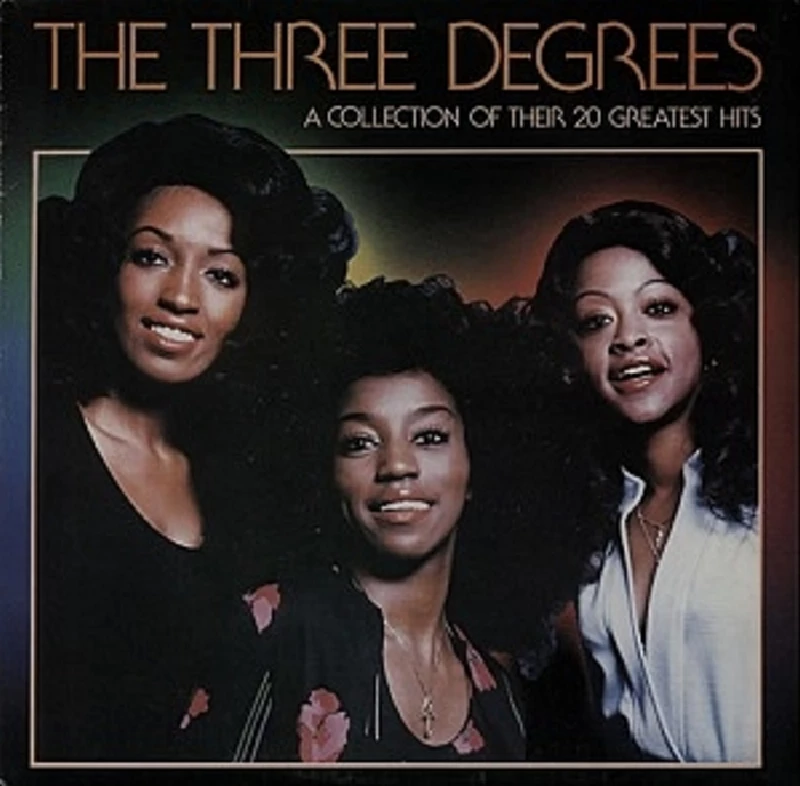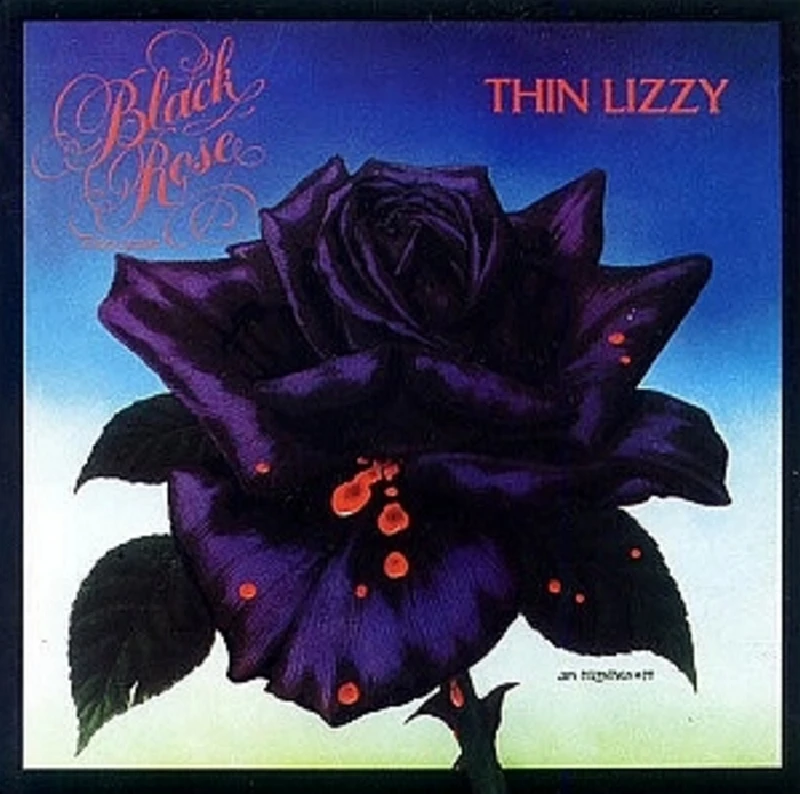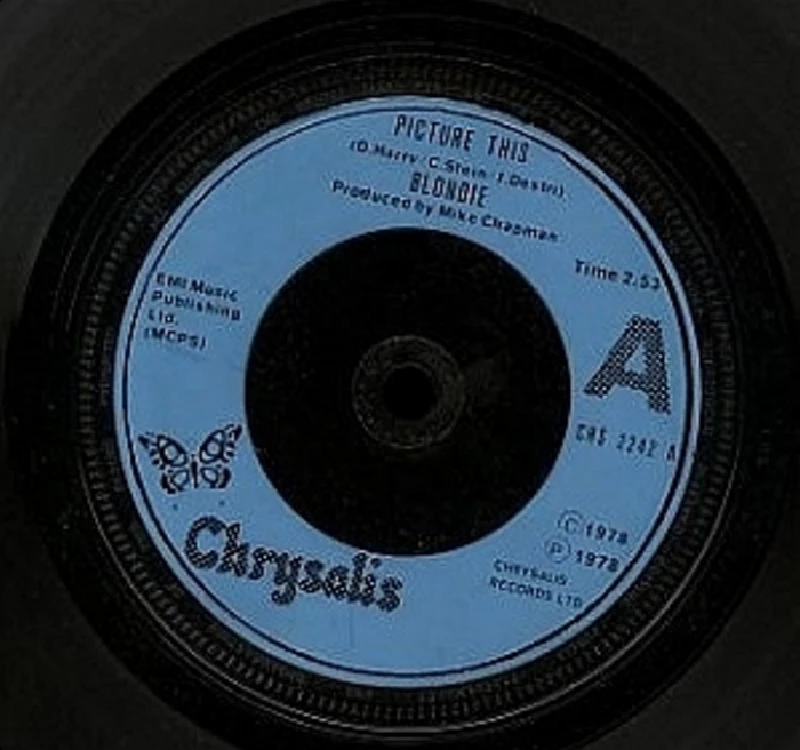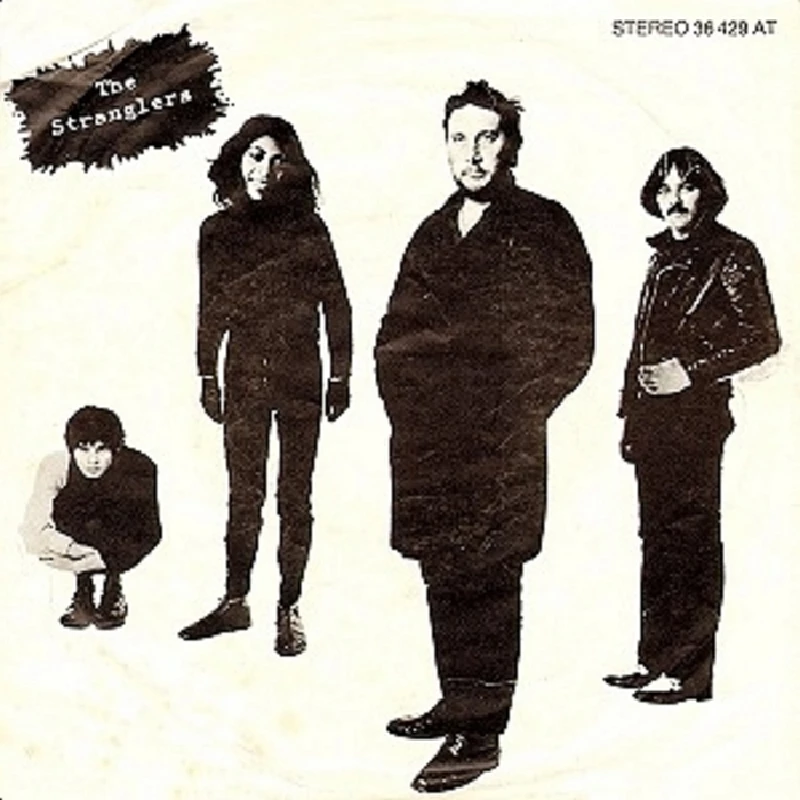Miscellaneous - Vinyl Stories
by Dave Goodwin
published: 12 / 4 / 2015

intro
In 'Vinyl Stories', his column in which music fans speak to him about their vinyl memories, Dave Goodwin talks to Pennyblackmusic editor John Clarkson about the 1970's Edinburgh record shop that started his musical interest
This month's 'Vinyl Stories' takes a trip right back to the start and the first article in this column. In it, our editor John Clarkson reflected on some of his favourite vinyl records, and it featured the likes of the Stranglers, the Clash, Kepler and David Bowie. Born in November 1965, John Clarkson was educated in Edinburgh, but spent three years at Loughborough University of Technology (as it was then) between 1983 and 1986. He returned to Edinburgh in 1986, and has worked there for the last twenty-seven years. John has been editing the Pennyblackmusic Magazine since the site first went online in September 1998. Over the years John has built himself a great collection of the beloved black wax, so I asked him to revisit his vinyl years and do another column for us. But it didn't go all to plan. As he admits himself about this month's article, "I was going to write about some of the singles I bought as a child and a teenager, and then things started to go in a different direction, and so I decided to roll with that. It is basically a tribute to a record shop that I spent a lot of time in as a twelve year old. It has regurgitated a lot of forgotten memories, and brought together a lot things that I hadn't really thought much about in thirty years. I just hope that it doesn't come across as too melancholic. It is not really meant that way." When I started this column, I had a vision of what I was after, and this is it. For me this is what 'Vinyl Stories' is all about. This is John Clarkson's 'Vinyl Stories' Part II... "If I am honest with myself, I don’t have many fond memories of the first two years of secondary school. The transition from primary school to secondary school proved difficult. I was already starting to feel like a misfit in my last years at primary school, and those feelings escalated and intensified as soon as I hit the big school. I was intelligent enough to just about get by in what was a fairly academic school, but was more of a plodder than a high flyer – anywhere I am going to get has always been through hard work – and so I didn’t slot in with the geeks. I was gangly and uncoordinated, totally hopeless on the playing fields and the scourge of any sports team. I had neither self-confidence nor much in the way of sharp wit and thought that I was ugly, and knew already by the age of twelve that I would never fit in with the cool kids or any form of any in-crowd. There were times as well in which I was bullied, and my battered sense of self-worth plummeted still further. During those two years I was desperately unsure within and unsettled in myself, and I can see now totally miserable. In other words, like countless others both before me and since, I was going through that awful loss of faith that often happens to oneself in that period at the close of childhood and the start of adolescence. I enjoyed books and reading, and would have probably spent most of my often solitary break and lunch times in the safe haven of the school library if I could. Our school was, however, on a split site. Those pupils in first and second year - the junior years - attended an annexe, while those in the senior years were taught in a larger building five minutes’ walk away. The annexe library as a result was only open one, maybe two days a week, and so it was probably because of that as much as anything else that I started to hang out in record shops. My interest in music first began to pique in early 1978 halfway through my first year at secondary school. I began to watch ‘Top of the Pops’ on Thursday nights, and to listen to Radio 1 and Radio Luxembourg. Those years of 1978 and then 1979 – for me the single best ever year in music – were by all accounts glory years for the music industry. Record sales were at a peak. In what was a wildly brave and inventive time for music, punk had expanded into new wave and post-punk, and the independent scene had started to take off. One always has an affiliation for whatever music one grows up with, but I often wonder now (as I know a lot of the other late 40 and early 50-somethings who work for this site also do), if I would have got quite so heavily into things – and remained there - if I had I had been born in another time. There were a lot of record shops in Edinburgh in those days, five alone at one point in the short stretch between Holy Corner and Tollcross and just a few minutes from school. I spent my breaks and lunch times in all of them, but my favourite by far was Allan’s, a small shop which was situated just across the road from the King’s Theatre in Leven Street. All these years on, and over three decades later, I can still picture much of it in my mind – the bay window in which a lot of new releases would hang; the two racks of vinyl records, one on the left side of the shop as you came through the door and one on the right hand side, and the singles bar at the far end of the room with the shop counter in front of it where the manager would stand. I remember him too, a blonde fellow of about thirty with a moustache. I never found out if he was ‘Allan’ or ‘Mr. Allan’ or, as there was another branch of Allan’s a then seemingly endless and unreachable bus journey’s ride on the other side of town in Portobello, someone else entirely. Pre-recorded cassettes were popular in those days and they were probably on sale there, but I have no memory of that, just of the vinyl. The vinyl on the right-hand side had little interest for me. One of my few friends, enticed by the red vinyl it appeared on, spent all of his birthday money on a LP called ‘Yankee Doodle Dandy’, which he found in the racks on that side of the shop. It reworked classic American country and folk songs such as ‘The Yellow Rose of Texas’ and ‘The Battle Hymn of the Republic’ into disco medleys, and was every bit as dire as it sounds. That perhaps in part put me off, the thought that if I spent long enough searching there that I too might be tempted into buying something equally woeful. The easy listening, disco and soul sections that laced its racks – much as I would come eventually another lifetime later to love the latter genre – had, however, little appeal to me. It was the rock section which ran all along the left-hand wall and in particular the ‘punk/new wave’, which filled its final row, where I would spend nearly all my time. I would spend hours in there, break times and lunch times on end, leafing through the racks, staring at and turning over its sleeves. The manager usually had five or six displays up on the walls, consisting of various sleeves and sometimes a poster or two of new releases. When he was finished with them, he would charitably leave them beneath the record racks and anyone could help themselves to them. I would take them home and hang them on the wall on my side of the room that I shared with my brother. I took most things, even acts that I didn’t like very much. I had the sleeve of the Three Degrees’ ‘A Collection of Their 20 Greatest Hits’ up above my bed at one point. I didn’t care for Prince Charles’ favourite group then, still could not call myself a fan now, but had a crush on one of them – Helen Scott, I think - and it was enough to make me want to display it for several months. Occasionally I got myself into bother as a result of those sleeves. One afternoon I came back to school with the cover for a Deep Purple compilation, ‘The Mark II Purple Singles’, and had it confiscated by our English teacher when he caught me looking at it instead of working. The English teacher was young and new to teaching. He was a music fan himself. We would see him coming back into school at lunchtime with ‘Sounds’ and ‘NME’ sometimes, and with some sympathy he promised it back at the period. I saw him at one point having a furtive, longing look at it himself. It was stolen from his desk. The English teacher exploded into anger when he discovered the theft, and threatened to put the whole class of thirty on detention unless it was returned by the end of the afternoon. As the clock counted down towards the close of the period and the sleeve did not re-emerge, he repeated that he was going to do this, and I knew that it fell on me to do something, or otherwise face the wrath and fury of the entire class. I lied to him, told him just as the bell started to ring that the sleeve had now been returned to me, and that I would rather not say who took it. His face cracked into relief and he nodded at me gratefully for my lies, knowing that I had saved things for both of us. I was in the changing room after another absolutely terrible afternoon of playing rugby, and had with me a sleeve of Magazine’s ‘Secondhand Daylight’ which I had got from Allan’s that day. Two brutish boys demanded it. One of them was the school’s only Mohican. I had watched him a few months before win a fight with another of the school’s notorious hard man on the Links behind the school by kicking him over and over in the head until long after it was bleeding. I refused, knowing that one of the PE teachers was outside in the corridor and that I was safe, and then instantly again that I had just been very stupid. Outside the changing rooms I was jumped. I got off lightly really, but was punched in the stomach and pushed to the ground. As the record cover was snatched out of my hands and the boys ran off laughing, I saw the Mohican push it into his oversized bag where he already had another four, maybe five of the same sleeves. I was luckier with Thin Lizzy’s ‘Black Rose: A Rock Legend’. A massive wall hanging of the black rose motif that embossed the front cover of the album hung over the rock section for some weeks. In front of it dangling on a piece of wire was a blow up of the painting on the back sleeve of all four members of the band – Phil Lynott, Brian Downey, Scott Gorham and the soon-to-depart Gary Moore – while bordering it were several of the album’s sleeves. Thin Lizzy had just had a huge hit with ‘Waiting for an Alibi’, and it soon became apparent that there was going to be very stiff competition for it. I remember a confident older boy turning up in the record shop one afternoon, pulling out a five pound note – then rather a lot of money - and offering it to the manager if he would reserve it for him, and then the look of dismay on his face when the manager turned his bribe down flat, explaining that it wasn’t his to sell and the boy would have to take the same chances as everyone else. One afternoon I knew in my gut that it would be there after school. I ran down to Allan’s, and the Thin Lizzy display was lying under the racks. It quickly became apparent that the hanging was too heavy and bulky to lumber the mile and a half home. It was enough to know that it could have been mine if I had wanted. I settled, delighted, instead for two sleeves, one so that I could display the front cover of the album and one that I could display the back on my bedroom wall. From what I remember I used them to replace the Three Degrees. I didn’t buy very much in Allan’s if one takes into account all the time that I spent there. I don’t remember ever buying an album there. For one thing I didn’t have the cash to. I am the eldest of four sons, and my parents – sensibly in hindsight – wanted us to respect the value of money. We, therefore, had less pocket money than some of our often more spoilt contemporaries. For another I am ashamed to say, with the money that I did have, there was the temptation also of other record shops. I did buy some singles there. I remember buying Blondie’s ‘Picture This’ at Allan’s after seeing them perform it on ‘Top of the Pops’. It had reached number twelve in the charts, and I wanted to help the beautiful, blonde woman who fronted the band – who I soon learnt was called Debbie Harry - to get even higher. It – in what seemed a symbol of everything else that was happening to me at the time – dropped down the charts instead next week. There was, however, of course, greater success to come for Blondie just round the corner. Their next single, ‘Hanging on the Telephone’, went to number five, and then they had their first of six number ones with ‘Heart of Glass’, all within the space of about six months of me buying that record. I remember buying the Ruts’ Babylon’s Burning’ as well from Allan’s, starting a lifelong love affair with that band. I saw them gig last year, and I have just pledged on Pledgemusic to help them release their biography. I also bought the Stranglers’ ‘Walk On By’ there as well after finding a pound on the street one lunchtime. When I got home that day, I was told that my grandfather, who had been ill with cancer all that year, had died that morning. He was a damaged, in some ways difficult man who didn’t get on with everyone, but he was kind latterly to me. I don’t really believe in such things, but I like to think that it was a last gift from him. What Allan’s gave to me, other than somewhere to go at lunchtimes for a vulnerable, insecure boy, and a deep love of full-size cover art, was the start of a musical knowledge. I saw there, in its racks, for the first time many of the albums that years later, when I had started working and had the cash to buy them, became part of my own collection – David Bowie’s early albums, X Ray Spex’s ‘Germfree Adolescents’, Ian Dury’s ‘New Boots and Panties’, Devo’s ‘Are We Not Men?’, Supertramp’s ‘Breakfast in America’, the Cars ‘Candy O’ and, of course, ‘Parallel Lines’ and ‘Black Rose’. Oddly enough – and I am sure that subconsciously it wasn’t just a coincidence - I ended up buying most of those albums on vinyl rather than CD. It got to the summer of 1979, and we transferred over to the main building at the start of third year and things overnight became a lot brighter for me. I discovered an increasing ability at English, and of all things also Latin and Ancient Greek, and began to feel more settled and grew more socially confident. I would continue to visit Allan’s sometimes at lunchtimes all the way up until I left school in 1983, but not so much as I did. The last time I was in there was in early 1984. I was in the neighbourhood and wandered in for what turned out to be a last look around its racks. It closed later that year, and like several other record shops in Edinburgh at that time, while I was away at university. I came back having been away for a ten-week term, and it was gone. It is a letting agency now. I pass by it quite regularly as it is near where I live, and often think of Allan’s and how it started my musical education.
Also In Vinyl Stories
Ben Phillips (2015)
Bill Wellwood (2023)
British IBM (2020)
Chris Bade (2023)
David Bowie (2016)
David Bowie (2016)
Fiona Hutchings (2017)
Funeral Choices (2024)
Is Vinyl Too Expensive? (2023)
Jed Southgate (2015)
John Rothera (2015)
Jonathan Beckett (2016)
Keith How (2015)
Picture Gallery:-



most viewed articles
current edition
Shrag - Huw Stephens Session 08.12.10 and Marc Riley Session 21.03.12Gary Numan - Berserker
Razorlight - Photoscapes
John Hassall - Photoscapes
Max Bianco and the BlueHearts - Troubadour, London, 29/3/2025
Primal Scream - Photoscapes
Roberta Flack - 1937 - 2025
Waeve - Club Academy, Manchester, 18/3/2025
previous editions
Heavenly - P.U.N.K. Girl EPManic Street Preachers - (Gig of a Lifetime) Millennium Stadium, Cardiff, December 1999
Boomtown Rats - Ten Songs That Made Me Love....
Beautiful South - Ten Songs That Made Me Love...
Barrie Barlow - Interview
Oasis - Oasis, Earl's Court, London, 1995
Trudie Myerscough-Harris - Interview
Dwina Gibb - Interview
Pixies - Ten Songs That Made Me Love...
Doris Brendel - Interview
most viewed reviews
Pennyblackmusic Regular Contributors
Adrian Janes
Amanda J. Window
Andrew Twambley
Anthony Dhanendran
Benjamin Howarth
Cila Warncke
Daniel Cressey
Darren Aston
Dastardly
Dave Goodwin
Denzil Watson
Dominic B. Simpson
Eoghan Lyng
Fiona Hutchings
Harry Sherriff
Helen Tipping
Jamie Rowland
John Clarkson
Julie Cruickshank
Kimberly Bright
Lisa Torem
Maarten Schiethart